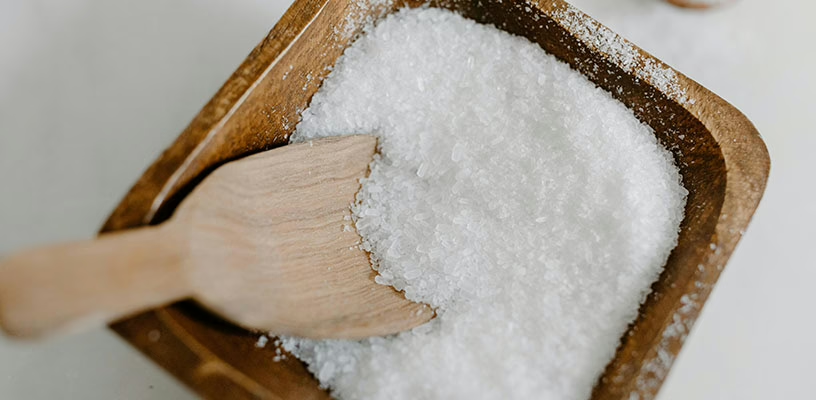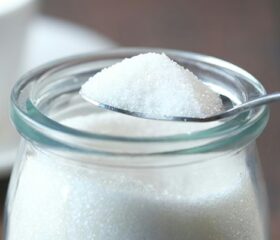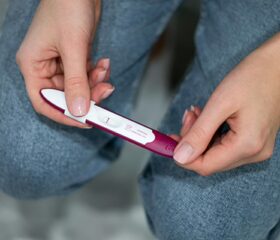Creating a DIY Pregnancy Test with Salt: Does It Really Work?
There’s no shortage of homemade pregnancy tests out there. You may have even heard that good old-fashioned table salt can help you figure out if you’re pregnant or not.

The idea of using salt to determine whether or not you should start bulk-buying diapers has been floating around the internet for a while. Before you grab a bowl and your salt shaker, let’s explore what this test is all about and whether it’s just pseudoscience.
What is the salt pregnancy test?
The salt pregnancy test is a DIY method that uses common table salt and your urine to detect pregnancy—or so its proponents claim.
The idea is that salt reacts with human chorionic gonadotropin (hCG), a hormone present in a pregnant woman’s pee. This is the same hormone that “real” at-home pregnancy tests check for.
Supposedly, this chemical reaction causes a visual change in the mixture that indicates whether you’re pregnant. 1
Does the salt pregnancy test actually work?
In short, no, it doesn’t. Much like the toothpaste pregnancy test, sugar pregnancy test, and the equally bogus bleach pregnancy test, there’s no scientific basis for the salt pregnancy test or even the idea that salt reacts with hCG at all.
Don’t be fooled—anyone who claims this works isn’t telling the truth. Influencers have been known to fake test results with creative video editing techniques for views, but even if someone has video evidence that the salt pregnancy test is real, it just isn’t.
How the “salt pregnancy test” is supposed to be performed
If you’re hoping for a cheap and quick way to find out whether or not you’re pregnant, the salt test won’t cut it.
In case you’re curious how it’s supposed to work, though, here’s how it’s meant to be done:
- Take a clean bowl or cup and a couple of spoonfuls of common table salt
- Collect a sample of your first-morning urine (when your hCG levels are most concentrated)
- Pour your urine over the salt
- Wait for a few minutes to a few hours (some testers wait up to 8 hours)
Interpreting the “results” is a bit tricky, because there’s no universally agreed-upon standard for what a positive or negative result should look like. To reiterate, that’s because this test isn’t real.
However, here’s what its proponents generally claim:
- Positive: As mentioned, if you’re pregnant, the mixture will supposedly turn “milky” or “cheesy” due to a reaction between the salt and hCG.
- Negative: The mixture will remain unchanged, looking like regular (salty) pee.
If you decide to perform the salt pregnancy test, it’s important to remember that it has no scientific basis. If you do it purely for fun (e.g., to participate in an internet trend), it’s a harmless—but potentially messy—activity. However, don’t make any actual decisions about your health or future plans based on the result.
Better alternatives to the salt pregnancy test
Although salt is still great sprinkled on French fries, it isn’t any good for checking whether you’re having a baby. Fortunately, there are lots of other accurate and reliable ways to determine if you’re pregnant.
Over-the-counter tests
You can pick up standard home pregnancy tests in most pharmacies. They’re 97%–99% accurate and quite easy to take. 2
To use a home pregnancy kit, wait until you miss your period. You can take it the day your period was supposed to come, or wait a day or two if you want even more accurate results.
Be sure to read the manufacturer’s instructions, but most of the time, you’ll need to:
- Pee into a cup and place a few drops on the pregnancy test, or pee directly onto the test
- Wait a couple of minutes
- Check the lines that appear on your test
Different pregnancy test strips and digital tests will display the results in their own way, but most have a control line (which shows that the test is working). If you’re pregnant, another line will appear.
Can over-the-counter pregnancy tests be wrong?
Although over-the-counter pregnancy tests are much more reliable than homemade ones (which don’t work at all), mistakes still happen. A 97%–99% failure rate does mean there’s a slight chance the result will be wrong.
In addition to the test simply being faulty, it may return inaccurate or misleading results if:
- You misread the instructions: Sometimes, pregnancy tests “fail” because their users weren’t clear on the instructions and peed in the wrong place or looked at the wrong line (or saw a very faint line on your pregnancy test).
- You took the test too early: In the very early stages of pregnancy, your human chorionic gonadotropin (hCG) levels may be too low to accurately gauge whether or not you’re pregnant. 2
- You drank too much water: The less concentrated your urine is, the more likely that the hCG in your pee will be diluted enough to confuse the test. This can happen if you take your test later in the day after drinking a lot of fluids. 3
Digital pregnancy tests can eliminate these doubts and reduce the chances of getting false positives or false negatives, but they usually have a higher price tag. If finding out whether you’re pregnant isn’t an emergency, the simplest solution is to just wait a few days and test again. The odds of two tests failing in a row are very low, as long as you’re careful to follow the instructions exactly.
Professional testing
You can often take a free test at family planning clinics. If you want to find out whether you’re pregnant with absolute certainty, you can always see your doctor for a blood test. These are more sensitive than urine tests and can return accurate results a little earlier (several days before you miss your period).
When to see a doctor
If you get a positive pregnancy test and experience the classic early pregnancy symptoms—like morning sickness (nausea) or fatigue—you can speak with your doctor to confirm whether you’re pregnant.
While most pregnancies don’t require immediate medical attention, there are times when it’s best to speak with your doctor, such as if:
- Your period is very late, regardless of the pregnancy test result 4
- You have intense stomach pain alongside a positive pregnancy test 5
- You experience heavy vaginal bleeding, intense pelvic pain, dizziness, or fever 6
Above all, keep calm. No matter the results of your pregnancy test, these symptoms don’t necessarily mean something serious is going on. It still can’t hurt to get your doctor to take a look.
Final thoughts
Though you’ll see the salt pregnancy test touted online as a natural alternative to regular pregnancy tests, it won’t do much aside from wasting some perfectly good table salt. There’s just no evidence this method works.
If you think you’re pregnant, stick to over-the-counter tests or speak with your doctor. Still, if you’re curious, then go for it—just take the results with a grain (or a handful) of salt.
Article Sources
- Medical News Today. "Does it work?" Retrieved April 15, 2025.
- MedlinePlus. "Pregnancy Test" Retrieved April 15, 2025.
- Clearblue. "What can affect a pregnancy test result?" Retrieved April 15, 2025.
- National Health Service. "Missed or late periods" Retrieved April 15, 2025.
- NewYork-Presbyterian. "Pregnancy Symptoms" Retrieved April 15, 2025.
- U.S. Centers for Disease Control and Prevention. "Signs and Symptoms of Urgent Maternal Warnings Signs" Retrieved April 15, 2025.







